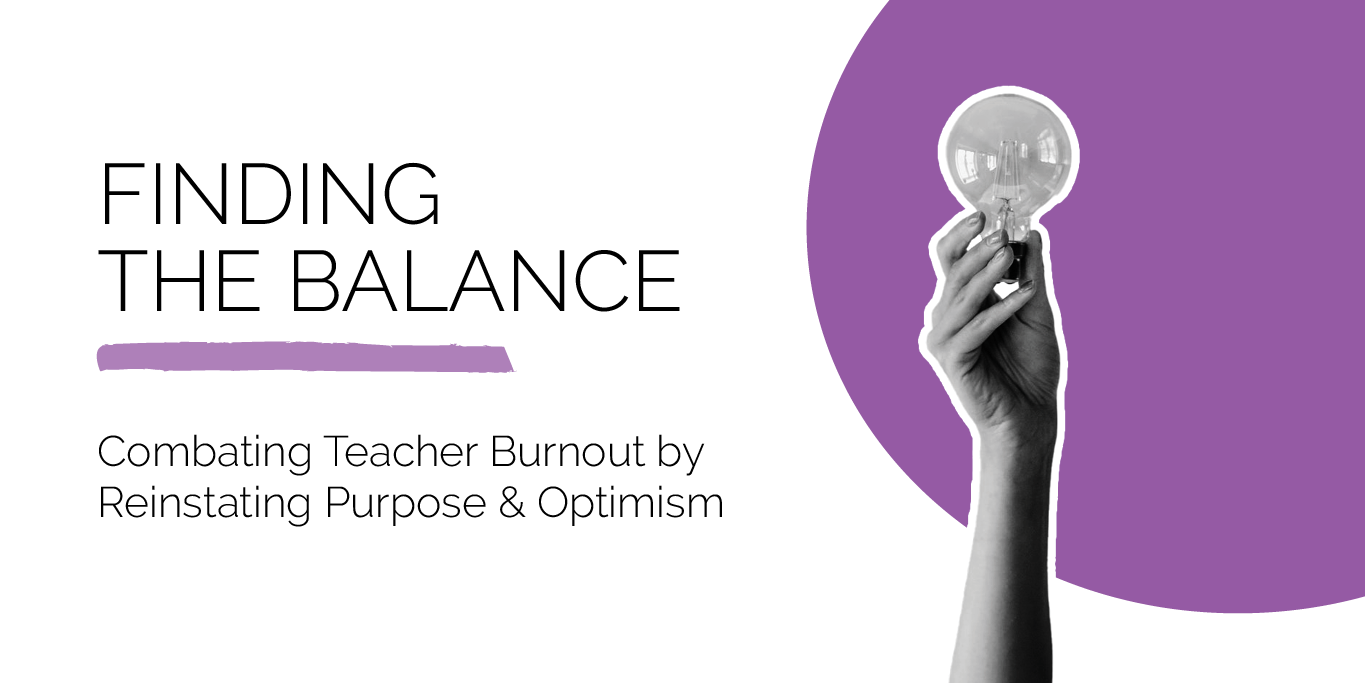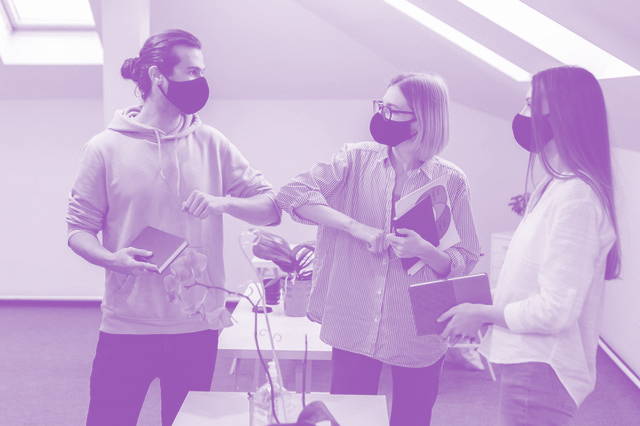
With the end of 2021 fast approaching, we can likely all agree that this has been yet another tough year of adjustment and balance. The stress of the world reopening in fits and starts has taken a toll on all of us, not the least of which being teachers and students. As we slowly return to a pre-pandemic teaching model with in-person, full size and full time classes, we’re beginning to learn that the “new normal” isn’t so normal after all.
With regulations ever changing, the majority of adjustment is being put directly on the shoulders of teachers themselves, who have had to pivot their instructional models and learn new emerging technology on a regular basis. Simultaneously, COVID-19 has highlighted the glaring need for personalized teaching models, experiential and project based learning, and revitalized assessment practices. Unfortunately, instead of feeling ready to learn and test new approaches, teachers are feeling overburdened with the stress of the past two years in their lives and classrooms. In fact, many teachers have reported compassion fatigue resulting in reduced imagination and creativity — the opposite of what is needed in a 2021 classroom.
With COVID-19 continuing to impact our lives, it’s important to acknowledge school leaders’ role in working with teachers to optimize their instructional capacity while leaving room for them to adjust and integrate what has been learned over the course of the pandemic. The question is: How might we find the balance between learning new things and just getting by?
Align & Remind
One way to begin to reignite passion and address burnout is to practice purpose alignment and remind teachers of their personal “whys?” For many in the education sector, future planning had to justifiably be put on hold during the pandemic to allow educators to focus on the immediate and pressing needs of their students. Now that we’re moving back towards “normal,” we can begin to reopen the dialogue surrounding teacher purpose and discuss how to move forward in a realistic yet innovative way.
Introduce Small, Actionable Steps
It’s important to remember that no big picture goal will truly begin to form without small, actionable steps that invite educators to jump onboard. When a goal seems too lofty, you risk losing buy-in from the most important stakeholders for putting those goals into practice — your teachers. In a time of immense stress and burnout, it’s more important than ever to ensure goals are not only aligned with teacher purpose, but that they’re manageable and realistic (SMART, if you will).
FOR EXAMPLE
As opposed to overburdening teachers with the goal of integrating all technology from at-home learning back into an in-person classroom, start with the short-term goal of identifying and reflecting on what did and didn’t work during teach-from-home.
This will allow teachers time to reflect on the past year with the simultaneous goal of sparking creativity around integrating what worked and letting go of what didn’t. To take it a step further, ensure the goals identified have applicable and actionable steps they can bring back into the classroom to test and reiterate upon. Remember, this is a year of adjustment — don’t rush into the future before fully figuring out the present.
Peer Collaboration
This type of collaboration can be integrated on a regular basis. Schools can embed professional learning communities into their day-to-day practices to provide ongoing opportunities to connect with others. For example, districts can implement regular peer-to-peer mentoring or begin professional development with interesting, collaborative peer-led sessions that allow teachers’ voices to be truly heard. The options are endless, but the message remains consistent: reinvigorating connection will reinstate purpose and give teachers the capacity to feel ready to learn again.
On a similar thread, feedback from teachers in our network has demonstrated their desire for professional learning communities. Especially now, emerging from a time of immense isolation, teachers truly value their colleagues’ feedback and collaboration in all aspects of their profession. Whether this takes place in a professional development setting or in the classroom, it’s clear that teachers crave a formal network where they can trade new ideas, reflect on their experiences, and brainstorm pathways for moving forward from this collective trauma.

Make Time
for Play
Finally, it’s easy to forget but important to remember that educators need time for play too. In the book Play: How It Shapes the Brain, Opens the Imagination, and Invigorates the Soul, researcher Stuart Brown said, “The opposite of play is not work. The opposite of play is depression,” — or, in this case, burnout. While educators should be consistently reminded of the goals they’re striving for and aligned with the future of education they hope to see, they also need time for rest and release — especially given the sharp increase in classroom management challenges impacting so many teachers this school year. To reiterate something that you know all too well, these past couple years have been hard.
Teachers, students, parents, and school leaders all felt the strain of the pandemic in different but equally heart wrenching ways. We must recognize the pressure put on educators in this time, yet we must also do more than simply acknowledge it: we need to help them release it. While professional development is important, no new learning will be absorbed if teachers are already at full capacity. Play is one way to release some of the built-up pressure and allow instead for replenishment. Incorporating play and social bonding into a teacher’s repertoire on a regular basis can not only reduce stress and enhance capacity for learning, but can reintroduce the creativity that has been depleted by the pandemic.
Finding the balance between rest and reinviting learning may seem daunting, but it is doable. Start small by reminding teachers (and yourself) why you’re here and follow this up by implementing small, actionable goals that will allow educators to feel they’re taking steps towards something personally meaningful to them. Do this by creating collaborative networks for both inspiration and release and by leaving time for play. Begin here and recognise that we are still in a period of adjustment. Change takes time, but inviting teachers into the conversation and ensuring they feel heard is one small step that makes a huge impact in creating the future of education we all are so desperately striving for.

The Future Design School team works with school leaders across North America and around the world to inspire and empower their teachers and students.
To book a meeting and discuss how to leverage our expertise, email team@futuredesignschool.com
